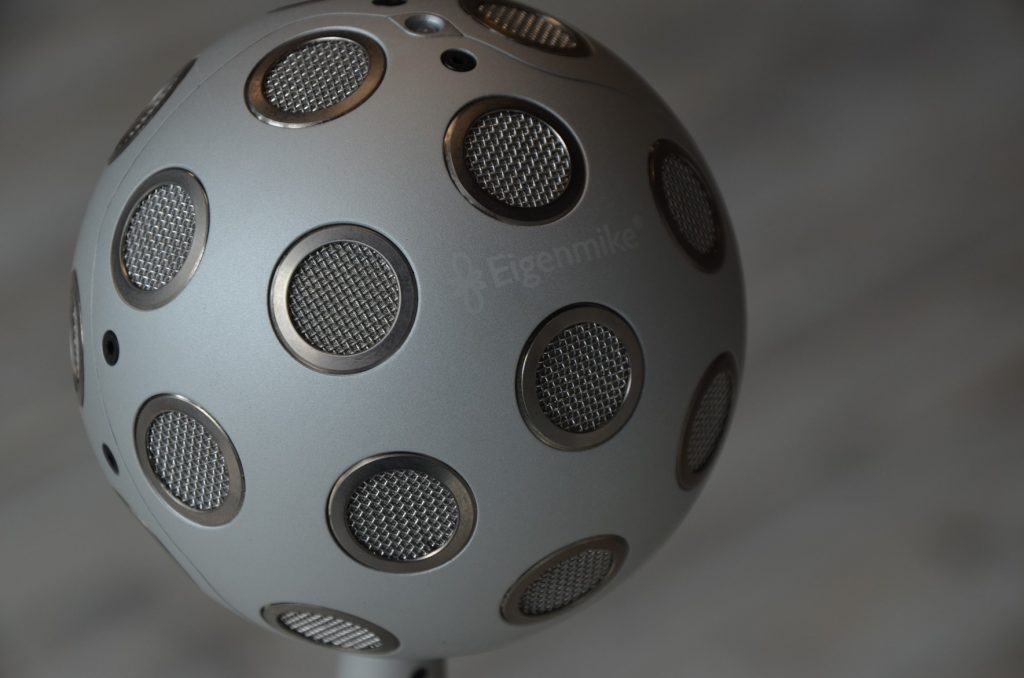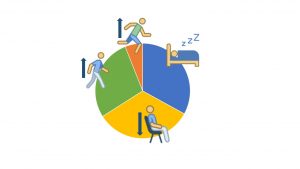
April 23, 2024


Our bodies were designed by evolution for movement: walking, running, throwing, carrying loads, etc. But, especially during the last few decades, technological advances have substituted many physically demanding tasks with tasks that are now done while seated: most work is now done seated, means of transport that allow us to travel dozens of kilometers daily—seated, television and other screen technologies that motivate many people to sit on the couch also during their leisure time. We designed environments and developed a culture that promotes sitting: “Good day, please, take a seat!”
Studies have shown that excessive sitting time, especially when in combination with low levels of intensive physical activity, increases the risk for many diseases and shortens life expectancy. The same is also true for sleep. Modern guidelines on physical activity for health include a recommendation on limiting sitting time and ensuring a healthy sleep. Those guidelines refer to the 24-hour day, while taking into account the importance of circadian rhythm, and are the reflection of an emerging paradigm shift in the field of physical activity and health that the whole day matters!
Based on the new 24-hour movement guidelines for adults, the healthy day includes1:

New movement guidelines include recommendations for adults to engage in moderate-to-vigorous physical activity for at least 150 minutes per week, minimize sitting time to no more than 8 hours per day and get 7 to 9 hours of sleep per day. The rest of the daily time should be filled up with low-intensity activities. Graphics: Kaja Kastelic.
By adhering to the guidelines, individuals can expect huge health benefits. A healthy lifestyle reduces the risk for cardiovascular disease, type 2 diabetes, several types of cancer, musculoskeletal diseases and mental disorders, to name a few of the most prevalent outcomes. Studies have shown that physical activity also has a protective effect regarding viral infections2, which is of great importance in light of the current COVID-19 pandemic (and potential future pandemics). In a recently published study, which was conducted in the United Kingdom, it was estimated that unhealthy lifestyle accounted for a 51% population attributable fraction of severe COVID-19 that requires hospital admission.3.
Life brings many challenges and adhering to healthy lifestyle guidelines is not always easy. It should be highlighted that at least some physical activity is better than none. In other words, even if one perceives that the targets from the recommendations are hard to achieve, it is good to have in mind that progressing towards targets will bring some health benefits. One of the most common barriers for people not to adhere to the guidelines is a lack of time and/or energy. Modern public health efforts for physical activity include the promotion of movement during leisure time, travel and while at work. It is believed that the workplace poses a great opportunity since many employees spend (at least) one half of the waking day at there.
With technological advances in recent decades, the proportion of employees working in an office, where most of the work is being done while seated, has risen significantly. Office workers in a classic office settings have only limited opportunities to be physically active; they can only stand here and there to deposit paperwork in the closet, or they can walk (for only a few steps) to see their co-worker. Prolonged sitting that most office workers engage in causes musculoskeletal discomfort, and more importantly, it has detrimental effect on the cardiovascular system and metabolic processes.
The latest issues and their solutions are being addressed in the InnoRenew CoE project, Ergonomic, adaptable, and active office furniture, that we have already written about in previous posts (Active Office). The project follows the daring paradigm from occupational health that work should be organized in a way that brings just the right amount of activity and rest to employees4. During previous years, we faced a rise of use in sit-to-stand office desks that allow office workers to work in a standing position. But studies have shown that just standing up is not enough.

Participant during the study that evaluated user’s comfort, body posture and work performance during office cycling. Photo: Kaja Kastelic.
Following the 24-hour movement guidelines, a just-right amount of activity and rest during the eight-hour workday would be: four hours or less of sitting, 11 minutes or more of moderate-to-vigorous physical activity and the rest of the time filled up with light activity. Furthermore, recent research exploring the synergistic effect of different amounts for sitting and intensive physical activity suggests that detrimental effect of excessive sitting could be eliminated with higher amounts of intensive activity. According to one study, detrimental effect of eight-hour sitting could be eliminated with one hour of intensive activity5. Those findings show that there exists many “just-right recipes”, whereby when sitting time is high, more moderate-to-vigorous physical activity is needed (and, consequently, less light activity).
However, a healthy eight-hour work schedule includes at least 10-20 minutes of intensive physical activity, which could be provided using the office cycle during productive work. In the aforementioned project, we are currently (among others) developing an office cycle that would promote a comfortable and naturally upright posture as well as be easy to handle, aesthetically attractive and made from renewable materials. In our recent study (conducted between the first and second wave of the COVID-19 epidemic), we explored the different geometries of office cycle and how they influence user’s comfort, body posture and work performance. We will publish the results in a scientific journal and present the practical value of the study to the public.

The study tested different office cycle geometries, from left to right: cylindrical, regular and saddle office cycling seat. Photo: Kaja Kastelic.
In InnoRenew CoE’s Human Health in the Built Environment research group, we are aware that the key to successful implementation of a novel office cycle is the subtly planned approach and presentation of this novelty to users. According to data that shows good acceptance of sit-to-stand office desks in our country and abroad, we are optimistic. Luckily, health and well-being is becoming more and more valuable and physical activity is an important determinant of it.
Kaja Kastelic,
assistant researcher at InnoRenew CoE
1 Ross, R., & Tremblay, M. (2020). Introduction to the Canadian 24-Hour Movement Guidelines for Adults aged 18–64 years and Adults aged 65 years or older: an integration of physical activity, sedentary behaviour, and sleep. Applied Physiology, Nutrition, and Metabolism, 45(10 (Suppl. 2)), v-xi. doi: 10.1139/apnm-2020-0843
2 Chastin, S., Abaraogu, U., Bourgois, J., Dall, P., Darnborough, J., Duncan, E., Dumortier, J., Jiménez Pavón, D., McParland, J., Roberts, N., Hamer, M. Physical Activity, Immune Function and Risk of Community Acquired Infectious Disease in the General Population: Systematic Review and Meta-Analysis. Available at SSRN: https://papers.ssrn.com/sol3/papers.cfm?abstract_id=3673184
3 Hamer, M., Kivimäki, M., Gale, C. R., & Batty, G. D. (2020). Lifestyle risk factors, inflammatory mechanisms, and COVID-19 hospitalization: A community-based cohort study of 387,109 adults in UK. Brain Behav Immun, 87, 184-187. doi: 10.1016/j.bbi.2020.05.059
4 Holtermann, A., Mathiassen, S. E., & Straker, L. (2019). Promoting health and physical capacity during productive work: the Goldilocks Principle. Scand J Work Environ Health, 45(1), 90-97. doi: 10.5271/sjweh.3754
5 Ekelund, U., Brown, W. J., Steene-Johannessen, J., Fagerland, M. W., Owen, N., Powell, K. E., . . . Lee, I.-M. (2019). Do the associations of sedentary behaviour with cardiovascular disease mortality and cancer mortality differ by physical activity level? A systematic review and harmonised meta-analysis of data from 850 060 participants. Br J Sports Med, 53(14), 886-894. doi: 10.1136/bjsports-2017-098963